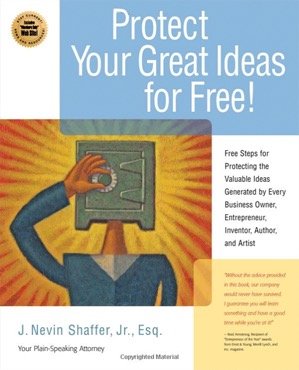More Patent Law Basics for the Business Person
By J. Nevin Shaffer, Jr.
In a previous article, some of the basic issues concerning patent law that businesses sooner or later encounter were explored. This article continues the discussion and provides some practical steps for businesses to when the need arises. But first, some statistics.
Statistics
- More than 288,000 patent applications of all types were filed in the United States in 1999.
- The number one applicant for the 7th year in a row was IBM.
- The city with the highest number of patents granted per capita was San Jose, CA with 300.4 rating .
- Austin, TX was 7th with 130.2.
- Gainesville, FL had 51.3 and was the highest ranked city in Florida under this system.
- Pensacola had a score of 8.3, representing 33 patents issued !
- In all, in calendar 1999 a record number of patents of all types issued and more than 3,000 of them came from Florida.
Statistics prove that the United States is a very innovative country. Individuals and businesses in Florida, and even right here in Pensacola, are developing new technologies every day.
First Put Your Idea in Writing
The United States has a “First to Invent” rule regarding who wins as between two people with the same idea. Every other country has a “First to File” rule whereby the first to file for an invention is the one who gets a shot at getting a patent. We have a better rule, in my opinion, because the inventor is not forced into a “hurry up and spend a lot of money on a patent application” situation. Here, so long as you, the inventor, can prove you invented the item first, you win. The difficulty, of course, is how do you prove when something was invented? The answer is found in the question: How do you prove anything? Typically, the person with the best tangible evidence is going to win. If the best the other inventor has is his Mom on the stand saying that Little Billy invented the thing 10 years ago and you have a signed, witnessed document, who’s a judge or jury going to believe? No offense to Billy’s Mom, but she just won’t carry the day against a properly prepared Confidential Invention Disclosure Document.
To Be Effective an Invention Disclosure Doesn’t Have to Be Fancy
Many of our clients believe that extraordinary efforts must be taken to adequately protect their idea. I usually encourage their paranoia to some degree because in my experience there are a lot of people with money these days chasing a very much more limited number of good ideas. It is not paranoia, as some have said, if they are after you! Nonetheless, to be effective, an Invention Disclosure does not require extraordinary measures. A good one includes:
- A brief description of the problem solved.
- A discussion of how others have tried to solve the problem in the past.
- A detailed description of the invention and why it is so special in the opinion of the inventor.
[Note: No working model is required in most cases. If your invention is a perpetual motion machine, however, the Patent Office will likely ask to observe it for a year or so before going further with the application.]
That’s it. Further, you do not need to seal it and send it certified mail to yourself. Instead, all that is necessary is that the inventor sign and date it. Witnesses should also sign and date it underneath a statement that says something like: “After first agreeing to keep this information confidential, I have read and understand the above Invention Disclosure”. The number of witnesses may vary from locale to locale and there may or may not be a need to have the signatures notarized.
Once prepared, the Invention Disclosure is a Trade Secret and should be treated as such i.e. kept confidential and only disclosed under the terms of an appropriate Confidentiality/NonDisclosure Agreement. Then what?
Get to a Patent Attorney
Once again, that’s my best advice! The sooner, the better! For one thing, although we are a First to Invent country, there are limits. That is, our system is designed to benefit society as a whole by encouraging individuals to share their innovations. As such, in the end it places a higher value on disclosing your idea sooner than later. That is, if you wait too long to bring your idea out, you might lose to a person who invented after you, even under our system.
Additionally, there are other options open to inventors than proceeding directly with a patent application. A patent attorney will listen to what the inventor has done and what the inventor wishes to do with the idea. From this information it may be clear that a patent search would be appropriate as a first step. In other circumstances, the inventor may decide to solicit interest from businesses before investing further in the idea. It may be that the invention has a global market so that steps must be taken to protect it internationally. These and other issues concerning the invention are best addressed by a patent practitioner.
© Copyright 2004 JNSJrPA. The material in this article is provided for general informational purposes only and should not be considered a legal opinion nor relied upon in lieu of specific legal advice. Accordingly, readers who require legal services in connection with their specific circumstances should consult an attorney competent in the field of intellectual property.

